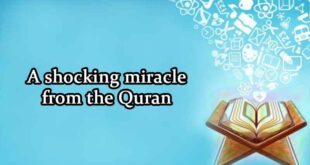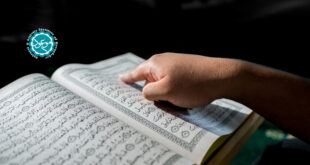The relationship between these two men according to what I have mentioned was not a master/pupil relationship, in the strict sense of these terms, such that as-Saduq can be counted, as he is by Professor ‘Irfan in the introduction to this translation, as one of al-Mufid’s teachers. It is accurate to distinguish in this discussion between being a teacher’s student and acquiring Traditions from a shaykh. In the strict sense, al-Mufid had only four teachers who were scholars of theology, and these were enumerated in my earlier biography of him; and in the legal sciences such as (fiqh), and hadith there was a single teacher, with whom al-Mufid studied for many years and ‘from whom he acquired what he knew’, as his biographers state, and this was the Shaykh Abu ‘l-Qasim Ja‘far ibn Muhammad ibn Ja‘far Musa, Ibn Qulawayh, al-Qummi, later al-Baghdadi (c 282/898–368/979). When al-Mufid died, he was buried beside the grave of his teacher in the holy shrine at Kazimayn [Iraq].
Differences in how ideas are argued do not reflect differences in the ideas themselves
Before we enter the main part of the discussion of the dog- matics of the Imamis and their two schools of Tradition and theology, a fact of the utmost importance must be stated right at the beginning, one which it would be an error to leave un- noticed or ignored, which is that it is necessary to distinguish between a given belief as such and the demonstration of that belief and how it is attained. Opinion can concur on one of the principal dogmas while the demonstrations which establish that principle can differ.
For example, unicity (tawhid) is the most important principal dogma of Islam, and no Muslim can be counted as such unless he acknowledges it and those attributes of the Creator or the aspects of His Oneness which establish the necessity of belief. However, there are differences in the way in which unicity and the attestation of the Creator are summarily demonstrated, or in which their details are elaborated. These demonstrations can depend on the Holy Qur’an and the Sunnah, or they can depend on intellectual proofs. This difference in the kind of proof, or in the nature of the demonstration, be it right or wrong, does not necessarily mean there is a difference in the dogma itself.
It would be possible to give dozens of examples of this. The Imamate, according to the meaning of it in which the Imamis believe, by which they are distinguished from other Muslim sects, is a dogma which all the Imamis share. In its very nature it is a matter, which depends on transmission, i.e., the Qur’an and the Sunnah, but there are serious differences in its demonstration, and between one scholar and another there can be total disagreement. We may find one scholar exclusively citing Qur’anic verses and Traditions, while another, who cites, alongside what is called ‘transmitted proofs’, intellectual proofs, within the limits within which this kind of discussion is bound by intellectual proofs and their particular domain.
If the well known debates of, the famous Imami theologian, on the Imamate are referred to,17 a great difference will be found between him and many who gave theological arguments for the Imamate, whether they were contemporary with him or came after him. It is not only that Hisham quoted Traditions without discussion and opinion, explanation and commentary, but frequently he did not quote a specific Tradition verbatim and referred only to the meaning and recited its contents as if it were he who was saying it.
One of the clearest examples of what is being discussed can be found in the difference between I‘tiqadatu ‘l-Imamiyyah by our Shaykh as-Saduq, and Tashihu ‘l-i‘tiqad by our Shaykh al- Mufid, as will be shown. Moreover, a single author, such as al- Mufid, differs in the kind of discussion he uses from one place to another. A good example occurs in the introduction which al- Mufid wrote for the Kitabu ‘l-Irshad, in one part of which he employed the style of hadith quotation, and in another the style of dialectical theology; and yet both sections are concerned with exactly the same topic.
This is not to say that the Imamiy-yah differed on the subject of the Imamate itself, or its meaning and special characteristics; however, it is correct for us to distinguish between two schools among them: that of Tradition, and that of dialectical theology. Moreover, it is the case that their approaches differed with respect to the study of the Imamate.
For a precise examination, which does not jump to conclusions on the basis of those instances in which we initially find difference and disagreement in the substance of the two approaches, we must carefully consider the effect these methods had upon the fundamental conclusions which their adherents arrived at, and then weigh the results one against the other not the methods utilized to reach these results. In the light of this, we can then conclude whether there really was a difference in opinion or belief; otherwise, the consideration of mere method- ological differences will lead to erroneous assumptions about differences in the principle of the belief, which each method supports or refutes.
Those beliefs which are incumbent on believers and those which are not
It is now necessary to turn our attention to what the Shaykh as- Saduq states in I‘tiqadatu ‘l-Imamiyyah, to the additions the Shaykh al-Mufid makes in Tashihu ‘l-i‘tiqad, and to what they both say, in general, about the beliefs of the Imamiyyah. What follows divides itself into two sections, something which is not specific to the beliefs of the Imamiyyah alone, but is in fact generally the case with Muslim dogmatics; nevertheless, we shall restrict our discussion to the Imamiyyah.
a) The beliefs, which true faith, requires of every responsible individual (mukallaf): A Muslim cannot be considered one of the Imamiyyah unless he maintains all of these. No one of them is excused for not knowing them, and, because of that, the ignorant person has to attain knowledge in such a way that he can learn proofs and ways of thinking so that the true faith is produced in him through knowledge and peace of mind.
The five dogmatic principles are, in brief: Unicity (tawhid), i.e. that Allah, Eternal, All-Powerful, and All-Wise, is alone the Creator, and is alone to be worshipped, without associates in either creation or worship; Justice (‘adl), meaning that Allah, praise be upon Him, does not oppress or persecute, not because he is unable to do so, but rather because His essence is divine perfection, free from evil-doing, and never without good; the Hereafter (ma‘ad), the meaning of which is clear and does not vary between Muslims; Prophet hood (nubuwwah), which is the belief in the message of the Prophet of Islam, may Allah bless him and his family and grant them salvation, and that he is the seal of the prophets, after whom no prophet will appear, and that the Holy Qur’an is the book which Allah sent down to him as proof of his prophet hood and a manifestation of His message; and the Imamate, the explanation of which will follow.
b) Elaborations on the issues of Unicity, Justice, the Hereafter,Prophethood, and the Imamate: It is not necessary that every mukallaf that is, everyone who has the necessary prerequisites for responsibility for his duties should know these details; nor does he have to learn about these elaborations to the point where he believes in them – as, on the contrary, it is necessary for him to learn how to pray, for example, in order to be able to perform the prayer–; ignorance in these cases is pardonable. Most of the contents of the book I‘tiqadau ‘l-Imamiyyah, with respect to the elaborations on the five principles we have indicated, belong to this second category. Our Shaykh as-Saduq did not intend to clarify simply those beliefs incumbent upon the individual, but rather those beliefs, which the Imamiyyah hold as a whole, whether or not such a belief was requisite. The intention in this was to give a clear, comprehensible picture of the doctrines of the Imamiyyah in matters which had caused concern among certain Muslims, whether there was agreement in the matter or not.
I have made this point in order that we may avoid gross mistakes or inaccuracy in understanding the Imamiyyah and their beliefs. As a single example of learned and detailed inves- tigation to this effect, one has the work of a scholar who is considered one of the most renowned Imami scholars and fuqaha’, the Shaykh Murtada al-Ansari (1214/1800–1281/1864), in his well-known textbook Faraidu ‘l-usul, which is famous as ar-Rasail, where he discusses the problem of the sufficiency of probable opinion (zann) in the principles of the religion; and there are additionally the glosses which a group of the greatest and the most knowledgable mujtahids and jurists of the Imamiyyah in recent times have written on it.18
Notes:
1. al-Fihrist, p.186.
2. Khulasatu ‘1-aqwal, p.147.
3. The Emendationof A Shi‘ite Creed, Intro., p.3.
4. 4 al-Fihrist (Bombay, 1317), p.283-4.
5. Ibid., p.74.
6. See ibid., pp.7, 16, 59, 77, 90, 93, 97, 125, 145, 158-9, 162, 190, 202, 281- 2, 297-8, and 305.
7. al-Kulayni, al-Kafi, vol.8, p.246; al-Husayn ibn Sa‘id, al-Mu’min, p.56; al- Majlisi, al-Bihar, vol.21, pp.137, 138; vol.73, p.293; at-Tirmidhi, as-Sahih, vol.5, pp.389, 734, 735; Abu Dawud, as-Sunan, vol.4, p.331; Ahmad, al- Musnad, vol.2, pp.361, 523-4; Ibn Hisham, as-Sirah, vol.4, pp.54-55; al- Waqidi, al-Maghazi, vol.2, pp.835-7; Ibn Sa‘d, at-Tabaqat, vol.2 pt.1, p.103; at-Tabari, at-Tarikh, vol.1, p1642.
8. The Emendation of A Shi‘ite Creed, Intro., p.4.
9. Diwanu ‘l-Murtada, vol.3, pp.204-6.
10. ‘Uyunu ‘l-akhbar, vol.1, pp.59 & 279; Kamalu ‘d-din, vol.1, pp.93, & 277.
11. ‘Uyunu ‘l-akhbar, vol.1, pp.14, 99, 118, 178, 209; vol.2, pp.99, 121, 238, &279; Ma‘ani ‘l-akhbar, p.145; at-Tawhid, p.406.
12. Mu‘jamu ‘1-buldan, vol.4, p.282.
13. ‘Uyunu ‘l-akhbar, vol.2, p.57.
14. Ibid., vol.1, pp.81, 129, 138, 144, 249-50, & 262; al-Amali, vol.2, pp.13, 65, 93, and many other places; al-Khisal, vol.1, pp.46, 57, 83; vol.2, pp.13, 65,& 93.
15. al-Khisal, vol.1, pp.106, 295 & 320; at-Tawhid, p.77.
16. al-Fihrist, (Bombay, 1317), p.276.
17. See, e.g., al-Kafi, vol.l, pp.171-3; al-Kishshi, pp.258-63; Kamalu ‘d-din, vol.20, pp.362-8; al-Khisal, vol.1, p.215; Majma‘u ‘r-rijal, vol.6, pp.218-21; al-Bihar, vol.48, pp.189-93, 197-203.
18. ar-Rasail, offset, Tehran, 1377, pp.230-42.
A Brief Biography of Shaykh al-Mufid
Pages: 1 2
 Mouood Mouood English Edition
Mouood Mouood English Edition



